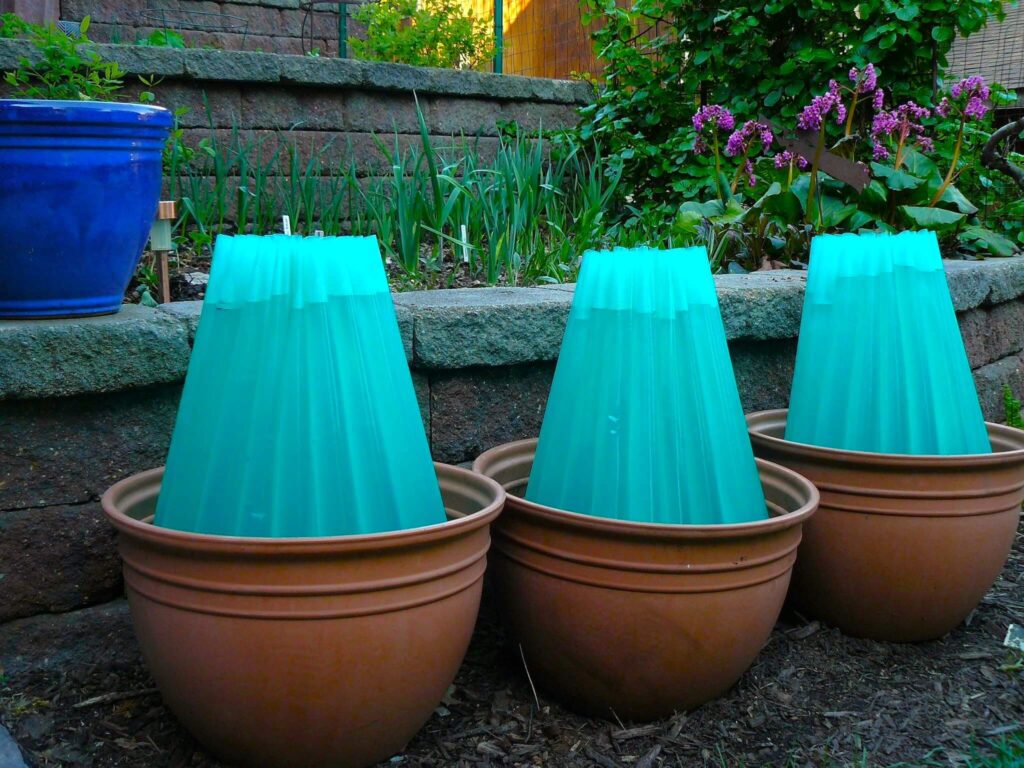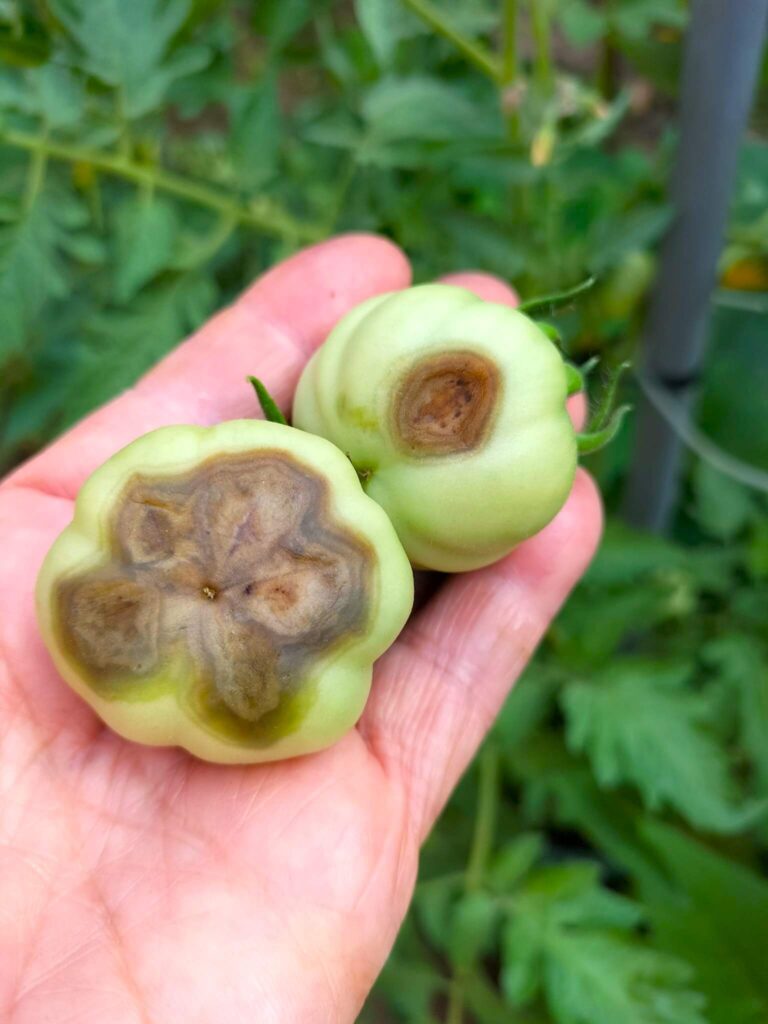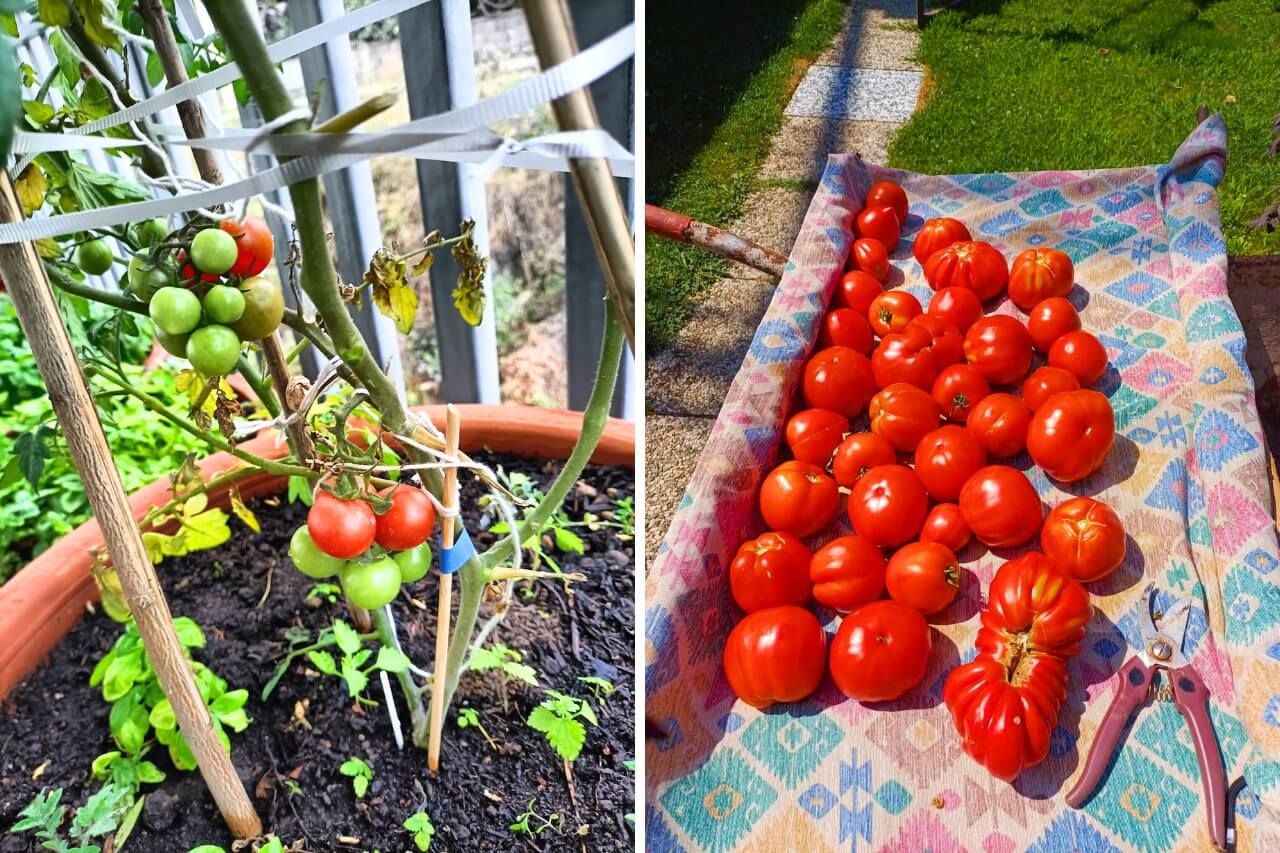Tomato plants are a favorite in my garden. I’m not sure why, maybe because I use them in so many recipes, but seeing them grow really brings me joy.
But let’s be honest. The journey from seed to harvest isn’t always smooth with tomatoes.
After years of growing them, I’ve witnessed many triumphs and many other failures. And if there’s one thing I’ve learned over the years, it’s that there are common mistakes (sometimes even stupid and small ones) that people make that can really ruin the harvest.
If you understand what they are and how to avoid them, you’ll always have perfect tomatoes!
Inconsistent Watering
One of the first things you have to know is that tomatoes love consistency! Irregular watering leads to cracked fruits, blossom end rot, and obviously unhappy plants.
Remember: Tomatoes crave deep, regular watering that reaches their entire root system. Aim for 1-2 inches weekly, adjusting for rainfall.
My game-changer was installing a simple drip irrigation system with a timer, but I have many plants for a normal garden, you can do just fine without it.
Another thing I always say is to use the finger test. Stick your finger two inches into the soil; if it’s dry, water deeply. In the end, watering deeply less often beats daily sprinkles that barely penetrate the soil surface.
Planting Too Early

I’ve been there. Spring fever hits, and you’re itching to get those tomatoes in the ground. But remember that it can lead to stunted plants that sulk for weeks.
Tomatoes are tropical plants that shiver when soil temperatures dip below 60°F.
Planting too early exposes them to cold snaps that can set them back for weeks or even kill them outright.
Instead, be patient! Wait until nighttime temperatures consistently stay above 50°F. If you can’t wait, you can use wall-o-water protectors or plastic tunnels to create a microclimate, granting your seedlings the warmth they crave.
Not Planting Deep Enough

Here’s a tomato secret that changed my gardening life: those fuzzy stems aren’t just for show.
Unlike most plants, tomatoes can grow roots all along their stems when buried.
Planting too shallow means missing out on a robust, drought-resistant root system. When transplanting, remove the lower leaves and bury at least two-thirds of the stem.
For leggy seedlings, try trench planting. Lay them sideways in a shallow trench with just the top leaves peeking out.
This trick creates super-strong plants that better withstand summer’s challenges and reach for more nutrients throughout the growing season.
Choosing the Wrong Variety
Another important decision to make before even starting is the best variety to plant.
You usually have to consider 3 things: your growing zone, available space, and what you’ll use them for. Short-season gardeners should opt for “early” varieties like “Early Girl” or Glacier”.
On the other hand, container gardeners should opt for determinate or dwarf varieties.
Another interesting thing I wanna tell you is that there are tomato varieties (indicated with the abbreviation VFN) that are bred to withstand common tomato diseases, reducing the need for chemical treatments. As the name suggests, they resist Verticillium wilt, Fusarium wilt, and nematodes.
Overcrowding

Crowded tomatoes compete for nutrients and light, resulting in smaller harvests and increased disease problems. When leaves can’t dry quickly after rain or morning dew, fungal diseases such as early blight spread very easily.
My advice? Give each plant room to breathe by spacing indeterminate varieties 3-4 feet apart and determinate types at least 2 feet apart.
If you can’t resist planting more, try using cages or vertical supports to train plants upward instead of outward. You end up with healthier plants, better air circulation, and easier harvesting.
If you notice a fungal infection, act immediately and remember to spray fungicide this way.
Nitrogen Fertilizer
Excessive nitrogen creates gorgeous, bushy plants, but with disappointing fruit production.
Always remember that too much nitrogen pushes plants to grow lush foliage at the expense of flowers and fruit.
Instead, use balanced, slow-release fertilizers designed specifically for tomatoes, or better yet, work in compost at planting time. Once plants start flowering, switch to fertilizers with lower nitrogen and higher phosphorus.
Skipping the Mulch
I always say that bare soil around tomatoes is like going on a very sunny day without sunscreen.
It’s always a bad idea, and as you probably already know, unmulched plants suffer from moisture stress, soil-borne diseases, and competition from weeds.
That means a good 2-3 inch layer of organic mulch keeps soil temperature consistent and reduces water evaporation.
My go-to mulch is straw, but shredded leaves and pine needles work well too. Just keep mulch an inch away from stems to prevent rot. As always in gardening, do not overdo it; always find the right balance.
Ignoring Suckers on Indeterminate Plants
Those little shoots that grow in the “armpit” between the main stem and branches aren’t extra foliage.
On indeterminate varieties, letting all suckers grow creates a tangled mess that reduces air circulation and diverts energy from fruit production.
While completely removing every sucker isn’t necessary, managing them is important. I pinch off most suckers when they’re small, focusing on keeping the plant balanced and open. Do this weekly during morning hours.
To avoid mistakes while doing it, follow my guide on how to prune tomatoes for maximum yield and plant health.
Forgetting About Companion Planting

Planting tomatoes in the same spot year after year or surrounded by the wrong neighbors can increase the probability of pest problems and disease.
The best thing you can do is to rotate your tomato patch yearly, and surround plants with beneficial companions like basil (improves flavor and repels insects) or carrots (loosen soil for tomato roots).
Always remember that careful planning of our garden is crucial. I’ve already explained how to do this in the article on the most common gardening mistakes.
Planting in Insufficient Light
The last very common mistake is related to sunlight. Tomatoes are sun worshippers that need at least 6-8 hours of direct sunlight daily, anything less and you’ll get lanky plants with meager harvests.
So, choose appropriate spots for your tomato plants. If your garden is shadier, focus on crops that tolerate less light instead.

